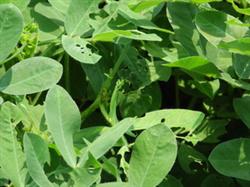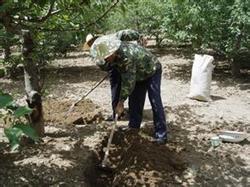Less crop diseases by skillful use of fertilizers

Research and practice have proved that the use of chemical fertilizer or organic fertilizer to control crop diseases and insect pests is not only economical, safe and effective, but also can save pesticides, but also has the characteristics of fertilization, no harm to natural enemies and no pollution to the environment. It is worth popularizing in production. Nitrogen fertilizer: ① ammonium bicarbonate, ammonia and other ammonium nitrogen fertilizer has a strong volatility, has a certain stimulation, corrosion and fumigation to pests, especially for red spiders, aphids, thrips and other small, weak endurance pests. Application method: spray evenly with 1% ammonium bicarbonate or 0.5% ammonia solution, once every 5-7 days, for 2-3 times. ② urea has the function of destroying insect chitin. The "urine washing mixture" prepared by the mixture of urea, washing powder and water in the ratio of 4 to 1, 400, has a good control effect on aphids, cabbage insects, red spider beads and other pests harmful to cotton, vegetables and flowers. ③ sprays 50% fresh urine or 3% ammonium sulfate aqueous solution when wheat rust occurs sporadically, and the effect is good. Phosphate fertilizer: application method: oxalic acid secreted by glandular hairs on the tender head of ① cotton has an attractive effect on cotton bollworm moth. During the occurrence period of adult Helicoverpa armigera, 1 / 2% superphosphate leaching solution was used as foliar fertilizer, which could change oxalic acid into calcium oxalate and lose its attraction to cotton bollworm. In this way, the number of eggs in the cotton field can be reduced by 33.3% to 73.4%, with an average of 55%, and the duration of each phosphorus spray is generally 2-3 days. ② tomato navel rot is a physiological disease caused by calcium deficiency. From the early flowering stage of tomato, 1% superphosphate extract was sprayed every half month for 2 or 3 times, and the disease control effect was obvious. Potassium fertilizer: potassium can enhance the stress resistance of crops, and the application of potassium fertilizer can inhibit a variety of crop diseases and insect pests. It is reported that of the 740 fungal diseases and 68 bacterial diseases, 71% and 75% were mitigated by potassium, respectively, and 59% of the 230 pests (mites) had a mitigating effect. In production, the most potash fertilizer directly used to control crop diseases and insect pests is plant ash. Application method: ① is 10 kg of plant ash, 50 kg of water, soaked for 24 hours, filtered and sprayed, which can effectively kill aphids on crops. Before planting onions, garlic or leeks in trenches, ② applied 20 kg of plant ash per mu to the bottom of the ditch, or in the seedling stage of vegetables such as onions, garlic, leeks, sprinkled 15 kg of plant ash per mu, and then hoed to cover the soil, which could significantly reduce the damage caused by root maggots and increase the yield of vegetables by 1520%. ③ in the initial occurrence of wheat sheath blight, 30 kg of plant ash per mu, while the morning dew is not dry along the ridge to the base of wheat plants, which has a certain effect on the spread of the disease; for fruit trees with root rot, first dig up the root soil, scrape off the diseased root skin, hang slightly, and then bury 2.5 kg of plant ash per plant, after about 1-2 months, the diseased trees can send out new roots.
- Prev

Skillful use of Fertilizer to Control crop pests
1. Nitrogen fertilizer: commonly used nitrogen fertilizer, such as urea, ammonium bicarbonate, ammonia, etc., can stimulate, corrode and fumigate pests. It is effective to control small and weak pests such as aphids and red spiders. During the occurrence of pests, 2% urea solution or 1% ammonium bicarbonate solution is sprayed outside the root, once every 7 days, continuously 2 Murray 3.
- Next

Immiscible fertilizers in agricultural production
The pure urea is white crystal, the industrial product is white or yellowish small particles, and the nitrogen content is 44Mel 46%. It is a neutral fertilizer with low hygroscopicity and soluble in water. It is the variety with the highest nutrient content in solid nitrogen fertilizer. Because of fast foliar absorption, high utilization rate and high yield increasing effect, it is the most suitable to be used as extra-root topdressing. The concentration of spraying should be root.
Related
- Fuxing push coffee new agricultural production and marketing class: lack of small-scale processing plants
- Jujube rice field leisure farm deep ploughing Yilan for five years to create a space for organic food and play
- Nongyu Farm-A trial of organic papaya for brave women with advanced technology
- Four points for attention in the prevention and control of diseases and insect pests of edible fungi
- How to add nutrient solution to Edible Fungi
- Is there any good way to control edible fungus mites?
- Open Inoculation Technology of Edible Fungi
- Is there any clever way to use fertilizer for edible fungus in winter?
- What agents are used to kill the pathogens of edible fungi in the mushroom shed?
- Rapid drying of Edible Fungi

